Diabetics must adopt a healthy lifestyle and demonstrate total perseverance in order to effectively manage the disease. Choosing the right foods is the main means of controlling blood glucose levels.
Previously, in the blog Diabetics, Eat Better, Not Less, we discussed the nutritional aspects of a diabetic diet. We discussed how foods with low carb counts and low glycemic index levels help with better diabetes management. In this blog, we’ll discuss foods that may actually be beneficial to diabetics.
However, before we start our discussion, let us understand some key things about diabetes first.
A low-carb diet and low glycemic diet are the keys
As we discussed in our blog Diabetics, eat better, not less, low-carb foods, dietary fiber, protein-rich foods, and healthy fats can minimize blood glucose spikes, as well as reduce insulin production. However, if a low-carb diet is not possible, complex carbohydrates may be consumed.
Regulation of insulin production
Insulin is a hormone produced by the pancreas that is crucial for converting blood glucose into energy by the body cells. Sometimes, our body cells become resistant to insulin and therefore cannot effectively convert blood glucose into energy. Insulin resistance can also occur when too much insulin is produced by the pancreas. Hence it is important to regulate insulin production better by appropriate food choices. There are also certain foods that can process blood glucose without requiring insulin.
Prevention is better than cure
Many studies have come to conclude that lack of physical activity and obesity are one of the main risk factors for diabetes. The presence of excessive body fat, especially in the abdomen area, causes persistent inflammation. This inflammation possibly interferes with the functioning of insulin and leads to diabetes.
In addition, as type 2 diabetes develops, the body’s sensitivity to insulin decreases, which results in more inflammation leading to more insulin resistance. Thus, type 2 diabetes becomes a vicious cycle of increased inflammation causing more insulin resistance, and vice versa.
Hence, an active lifestyle coupled with an anti-inflammatory diet may be a good way to prevent diabetes. Doing physical activity improves insulin sensitivity and consequently reduces inflammation. With this knowledge, let us discuss the various food choices diabetics have.
While vegetables usually have low carbs and high fiber, they also contain vital antioxidants, vitamins, and minerals that are essential to our health.
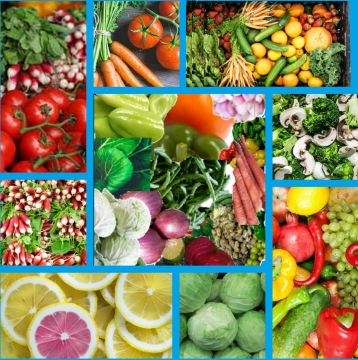
There are many low-carb vegetables that are excellent for diabetic diets, such as cauliflower, cabbage, spinach, broccoli, jackfruit, pumpkin, tomato, bell pepper, cucumber, carrot, radish, zucchini, and asparagus.
Some of them, such as zucchini, pumpkin, and jackfruit, are also rich in fiber, which can help lower blood sugar.
Tomato and most leafy green vegetables are anti-inflammatory too.
The radish known for its anticancer properties, also regulates blood glucose levels and enhances glucose absorption.
Sweet potato is a better choice for diabetics than white potato because it is low in glycemic index and rich in beta-carotene.
Bitter gourd is not only known for its several medicinal properties but also aids in the movement of glucose into the body cells to produce energy thus reducing blood glucose levels.
Low-carb vegetables such as broccoli reduce inflammation, which is a cause of many chronic diseases, thus preventing diabetes-related complications.
In addition to being low-calorie, pumpkin contains many nutrients that promote overall health and blood sugar balance. Even though it has a high glycemic index, it has a very low glycemic load, which is a better indicator for diabetes management.
Fruits contain a lot of fiber, healthy fats, essential vitamins, and minerals. Additionally, fruits provide several antioxidants which reduce the risk of developing chronic diseases such as heart disease, cancer, inflammation, and diabetes.
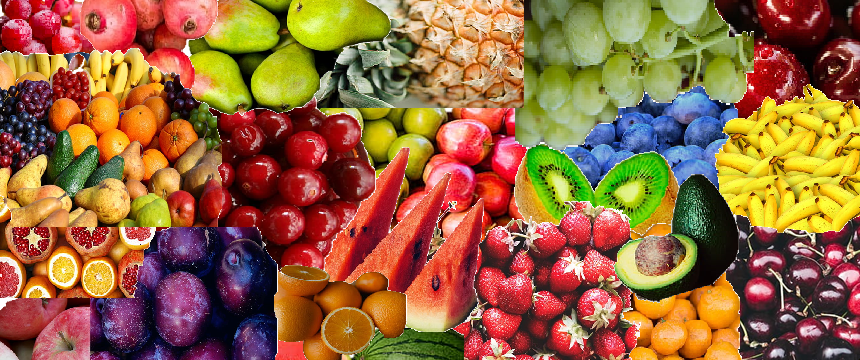
Glucose and fructose are the two types of sugars in fruits, so diabetics are sometimes in a bind as to which fruit they should consume, because some fruits are sweeter than others.
Fruit selection should, in fact, be governed by the restriction imposed by the nutritionist on the amount of carbs in the diet. It doesn’t matter what the source of carbs is as long as diabetics don’t exceed this limit.
Another aspect to be aware of is that fructose is metabolized differently by our body than glucose. The liver converts fructose into energy without requiring insulin, so the blood sugar impact is minimized. Despite this, too much fructose can harm your liver, just like alcohol.
Hence diabetics should choose fruits with lower carb (glucose) content. Fructose may not cause much harm; however, one should monitor their intake.
Diabetics should avoid or limit the intake of fruits with a high glycemic index (GI). Apple, avocado, berry, peach, pear, guava, plum, and strawberry are all low on the glycemic index. Fig, grape, kiwifruit, mango, and orange are in the middle of the glycemic index. Watermelon, ripe banana, and pineapple are high on the glycemic index and their consumption should be monitored. Additionally, Avocado is also anti-inflammatory.
The Indian blackberry (also known as Jamun), specifically the seed, contains compounds that slow down the conversion of starch into sugar, thereby lowering blood sugar levels.
The Indian gooseberry (amla) is rich in vitamin C, antioxidants, vitamins A and E, and minerals. Gooseberries contain soluble fiber that dissolves quickly, slowing digestion. This prevents blood sugar spikes by slowing glucose absorption into the bloodstream.
In addition to providing good amounts of fiber, blueberry also stimulates the release of a hormone that improves insulin sensitivity and lowers blood sugar levels.
Consuming whole grains is associated with a lower risk of several diseases when consumed as part of a healthy diet.
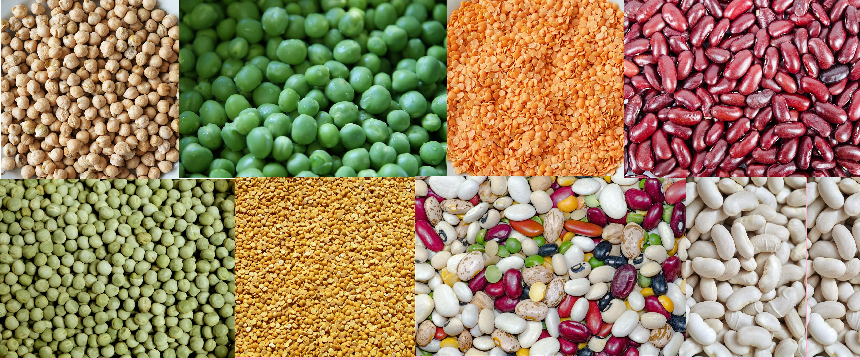
Whole grains contain the endosperm, germ, and bran, unlike refined grains, which retain only the endosperm.
Whole grains include barley, brown rice, buckwheat, cracked wheat, millet, quinoa, oatmeal, pasta, popcorn, whole-grain corn, whole-wheat bread, and wild rice.
Whole grains are usually rich in slow-digesting starch, fiber, protein, vitamins, and minerals and help in blood glucose management.
Quinoa is one of the best food sources of protein and all nine essential amino acids. It also contains various minerals. From a diabetic perspective, its protein content keeps one satiated for longer periods and requires less eating, which is very important for weight management.
As a low-glycemic index food, steel-cut oats are preferred over rolled oats. Regular consumption of oats improves blood sugar levels and lipid profiles in people with Type 2 diabetes.
In addition to their low glycemic index, legumes provide fiber and resistant starch—all of which may help manage diabetes better.
Legumes consist of beans, peas, and lentils.
Diabetes-friendly beans include kidney beans, black beans, pinto beans, lima beans, peanuts, and a variety of chickpeas.
Green peas and black-eyed peas are high in proteins and take longer to digest hence smoothening blood glucose spikes.
Lentils contain complex carbohydrates and fiber and are available in many colors – green, brown, black, red, yellow, and orange. Indian “dals” are split versions of beans, peas, and lentils. Dals such as masoor, urad, moong, and chana are high in complex carbohydrates, fiber, proteins, minerals and vitamins and help stabilize blood glucose levels.
Seeds offer a lot of nutrition if we consider that they can help a plant to grow and mature. Fiber, healthy fats, proteins, vitamins, minerals, and antioxidants are all present in seeds. This can help reduce blood sugar levels, cholesterol levels, and blood pressure and even prevent or mitigate complications arising out of diabetes.
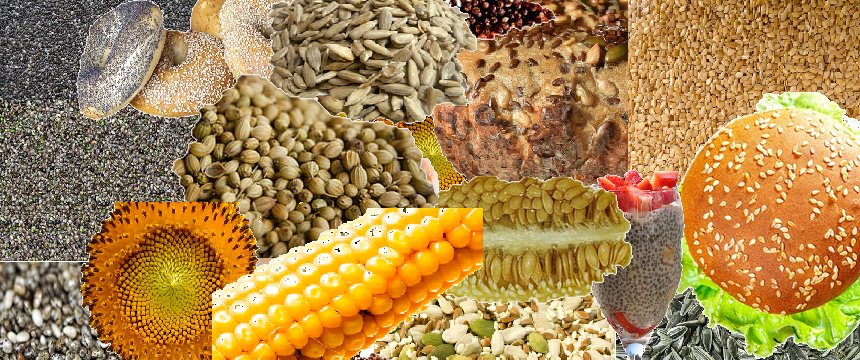
Flax seeds are a great source of fiber and healthy fat. They also contain lignan, an antioxidant polyphenol.
Chia seeds are also packed with fiber, healthy fats, and antioxidants.
Besides being a good source of plant-based proteins, hemp seeds also contain essential amino acids and are effective in treating inflammation.
Seeds of the sesame plant contain antioxidants that reduce damage caused by free radicals.
Seeds of pumpkin contain healthy fats and may help with heart-related ailments.
Sunflower seeds are anti-inflammatory and may also help in managing cholesterol levels.
Salmon, sardines, tuna, and mackerel are rich in omega-3 fatty acids and protein and provide a healthy alternative to carb-rich foods.
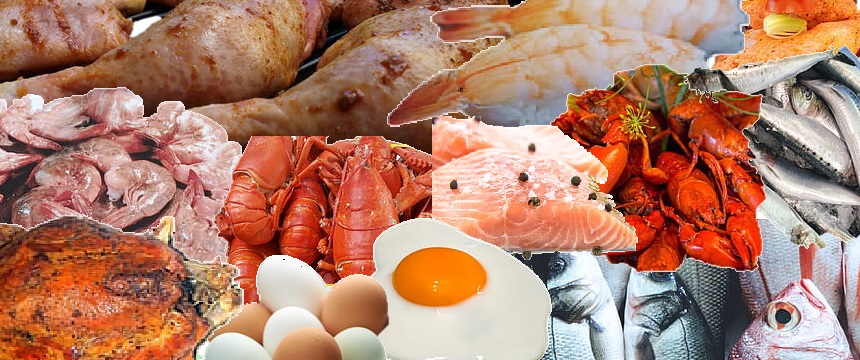
Despite the fact that omega-3 fatty acids may not directly benefit blood glucose, they are considered to be anti-inflammatory and thus beneficial for diabetic-related complications such as cardiovascular diseases.
As meat contains no carbohydrates, it is not a significant factor when it comes to diabetes management. However, lean meat can be an excellent source of protein and is important in diabetic diets.
Choose lean sources of fresh meat, which are low in calories and devoid of unhealthy saturated fats.
Eating meats such as red meat may increase fat and hence inflammation in the body which in turn can be the cause of diabetes.
One should adopt a healthy cooking method for the meats. Meats should not be cooked at high temperatures or with unhealthy oil.
Chicken, especially the breasts and wings, is lean in fats and is a very good source of protein.
When it comes to beef, one should choose lean cuts.
Eggs are rich in proteins but also have a high amount of cholesterol concentration in the egg yolk (the yellow portion). Although there is not enough conclusive research on the egg-cholesterol connection, egg yolk can be excluded by cholesterol-watchers. Boiled egg, without being fried, is a healthier way of egg consumption.
You can also try healthy herbs, spices, and cooking oils to ease symptoms and control your blood sugar.
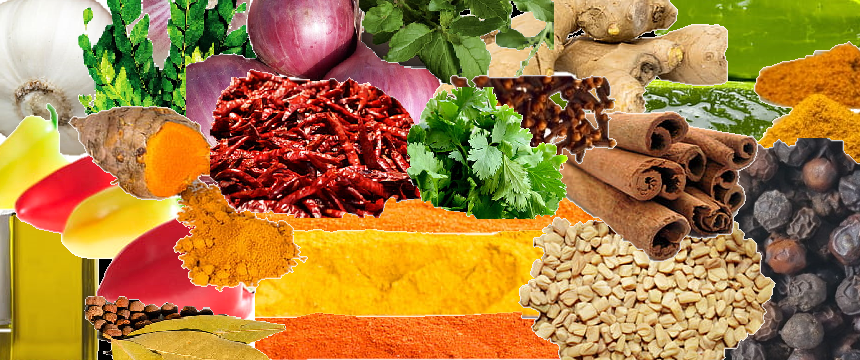
Spices like cinnamon can increase metabolism because the body uses more energy to process them than other foods. Studies have shown a significant drop in fasting blood sugar levels, improvement in HDL cholesterol, and a reduction in body weight by incorporating cinnamon in the diet.
Fenugreek seeds contain soluble fiber, which slows down digestion and absorption of carbohydrates thus smoothening blood glucose spikes. Based on the results of a clinical trial, a dose of 10 grams of powdered fenugreek seeds soaked in hot water may help control type 2 diabetes.
Cumin boosts insulin production in the body thereby regulating blood sugar levels. Drinking cumin water on an empty stomach every day after soaking cumin in water overnight can be a great way to begin.
As described in Ayurveda, holy basil, also known as tulsi in India, has multiple therapeutic benefits. Studies have found that tulsi can assist in normalizing fasting glucose, postprandial glucose, HbA1c levels, and blood pressure, reducing uric acid, and improving lipid profiles in type 2 diabetics. Tulsi is also known to improve immunity and have beneficial cognitive effects.
Turmeric has been used for the treatment of diabetes in Ayurvedic medicine. It has antioxidant and anti-inflammatory properties and is used to treat several chronic diseases. Curcumin is one of the main components of turmeric, and it benefits several aspects of diabetes, including insulin resistance, high blood glucose, high cholesterol, and insulin secretion. Curcumin also prevents complications arising out of diabetes.
A study conducted on diabetic rats has concluded that dried onion powder may help lower fasting blood sugar, lower LDL cholesterol, and higher HDL cholesterol.
The benefits of garlic extract include antioxidant, anticarcinogenic, antimicrobial, and many other properties. A number of studies have shown that it can lower blood pressure, fasting blood glucose, HbA1c, total cholesterol, triglycerides, and LDL, while improving HDL.
Curry leaves are rich in antioxidants and vitamins and may help people with diabetes lower their blood sugar levels as they slow down the conversion of starch to glucose.
Giloy burns extra glucose in the body and enhances insulin production, while rosemary shows insulin-like effects, whereas ginger increases both insulin sensitivity and insulin secretion. Triphala contains phytochemicals that may improve insulin resistance, which in turn makes blood sugar easier to absorb.
Studies have shown that specific ginsenosides in American or Asian ginseng extracts can be beneficial for Type 2 diabetics by reducing blood glucose levels.
Aloe vera contains vitamins, enzymes, minerals, sugars, lignin, and amino acids, making it a powerful antioxidant with anti-cancer, anti-inflammatory, and laxative properties. Research has found aloe to be beneficial in lowering fasting blood sugar and HbA1c and improving lipid profiles in pre-diabetic patients.
The caffeine and catechins in green tea have been shown to boost metabolism and increase fat burning. A faster metabolism helps in lowering sugar levels.
Psyllium, also known as Isabgol, is a soluble fiber made from husks of Plantago Ovata’s plant’s seeds. It slows the absorption of glucose in the blood while also lowering blood cholesterol.
Consuming medium-chain triglyceride (MCT), a type of fat that metabolizes very quickly compared to long-chain triglycerides (LCT), may also improve insulin sensitivity. It is possible to either take 100% MCT oil supplements or increase MCT intake through diet. MCT are also present in unprocessed coconut oil, whole milk, and butter, but in varying amounts. Coconut oil is a saturated fat, however, which can also raise LDL (bad) cholesterol.
Research has shown that olive oil is not only a healthy alternative to cooking oils, but it also increases satiety, which helps to control weight. Further, olive oil, flaxseed oil, and canola oil are all anti-inflammatory.
Nuts which may help in diabetes management
Walnuts, in addition to being antioxidants, are low in carbs, and high in healthy fats, fiber, and omega-3 acids. They are inflammatory too. Almonds are a rich source of magnesium which may improve insulin sensitivity.
Vitamins and Minerals
Vitamin D deficiency is a risk factor for many diseases. Studies have shown that adequate vitamin D is necessary for normal insulin secretion and to reduce insulin resistance.
Calcium also contributes to insulin sensitivity, and vitamin D is also required to absorb calcium.
Magnesium deficiency can also impact normal insulin secretion. It can help improve insulin sensitivity.
In addition to being a naturally occurring antioxidant in the body, alpha-lipoic acid (ALA) is also a component of many foods. It helps improve insulin resistance. Furthermore, it inhibits beta cell destruction, improves glucose uptake, and its antioxidant properties may be particularly useful in slowing down diabetic complications, such as diabetic neuropathy.
Chromium has been shown to lower glucose levels and boost insulin sensitivity, according to some studies.
The key to staying healthy for diabetics is to manage their calories. Health can be attained if nutritionists plan a proper diet for them and diabetics can adhere to it diligently. Overeating is linked to diabetes, hypertension, high blood cholesterol, and heart attacks because excess calories accumulate in the body.
Generally speaking, diabetics should adhere to foods that are low-carb/calorie, high in healthy fats and protein, and rich in dietary fiber. Whole fruits should be preferred over fruit juices. Sugary drinks and excessive alcohol may be avoided.
A word of caution
The effectiveness of various diabetic foods has been studied on humans and animals, as well as in the lab, with mixed results.
Further, the foods discussed in this blog may interact with diabetes or other medications. Hence one should consult a qualified doctor or dietician before adopting any of these foods, especially with respect to form, amount, and method of intake.